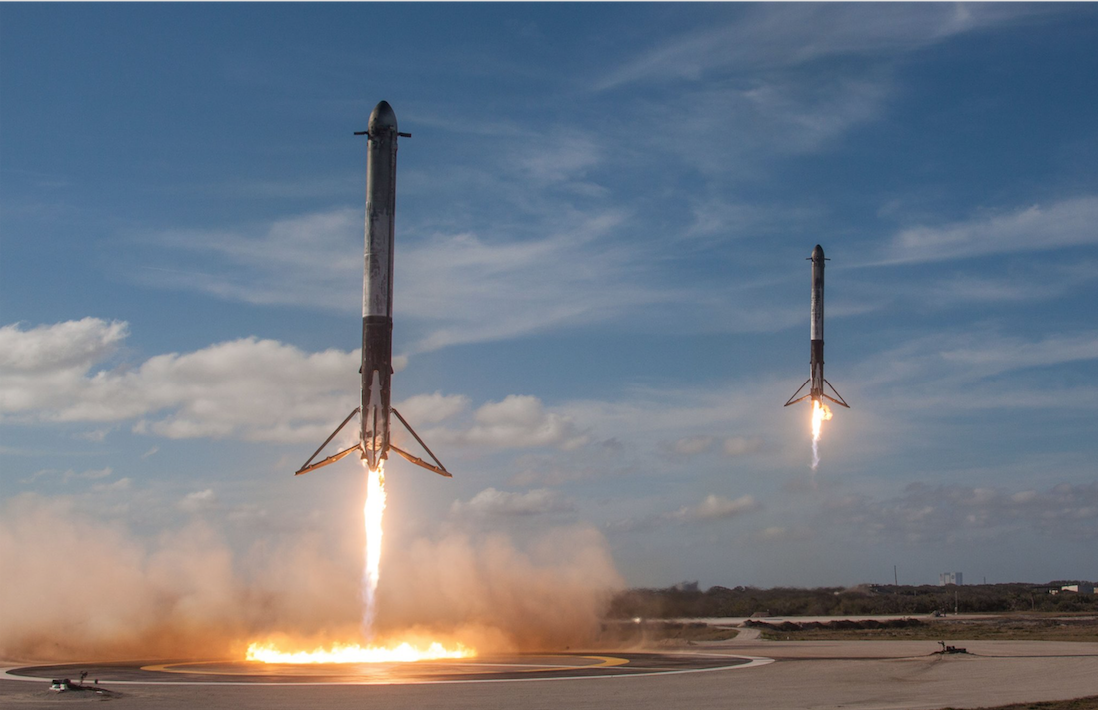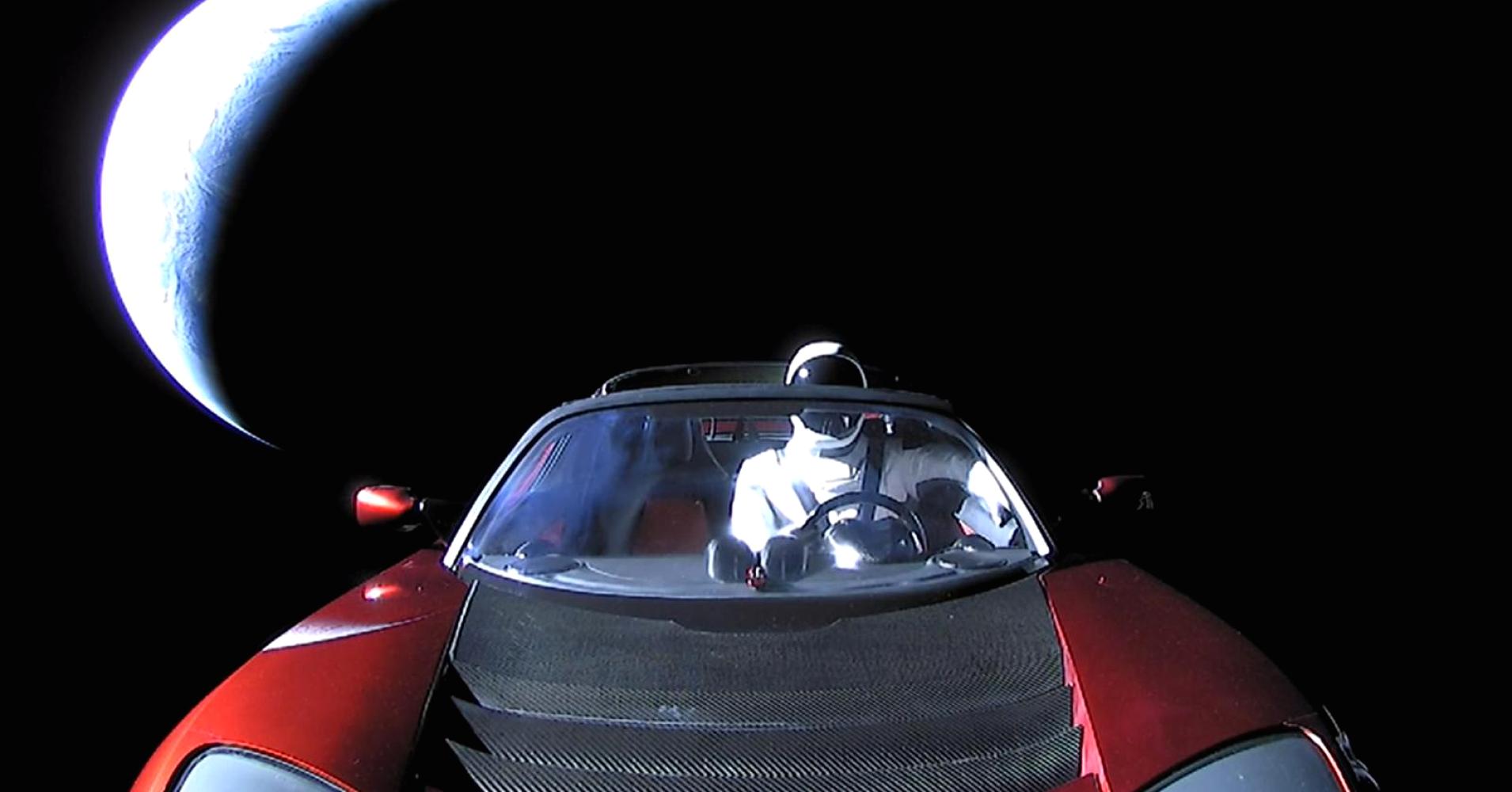I was supervising Jr IS, but as I circulated around the lab, I watched the clock. Everyone was working quietly.
Just before launch, I snuck back to my office and closed the door. The SpaceX Falcon Heavy was surrounded by swirling clouds of condensation at Kennedy Space Center‘s historic Pad 39A. Amidst spectactors’ cheers and the sound suppression system’s deluge, the 27 Merlin rocket engines of the world’s largest launch vehicle ignited. I barely breathed for the first 2.5 minutes of flight under the three Falcon 9 boosters. The two side boosters detached, returned to Cape Canaveral, and landed side-by-side in a 1950s science fiction fantasy. While most test launches use mass simulators of concrete or steel, the payload fairing separated revealing Starman in the driver’s seat of a Tesla Roadster with Earth in the background.
Heart thumping, I returned to Jr IS. Everyone was working quietly.



Thanks, Mark! I enjoy reading your posts as well.